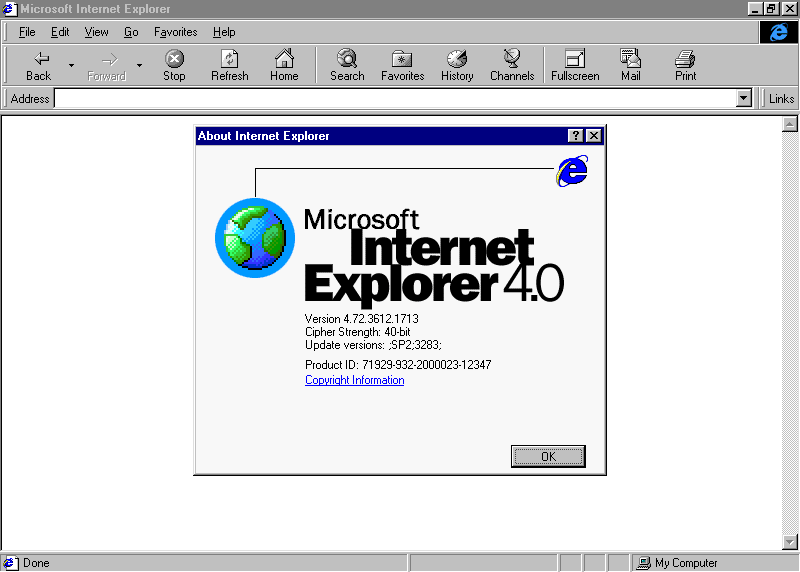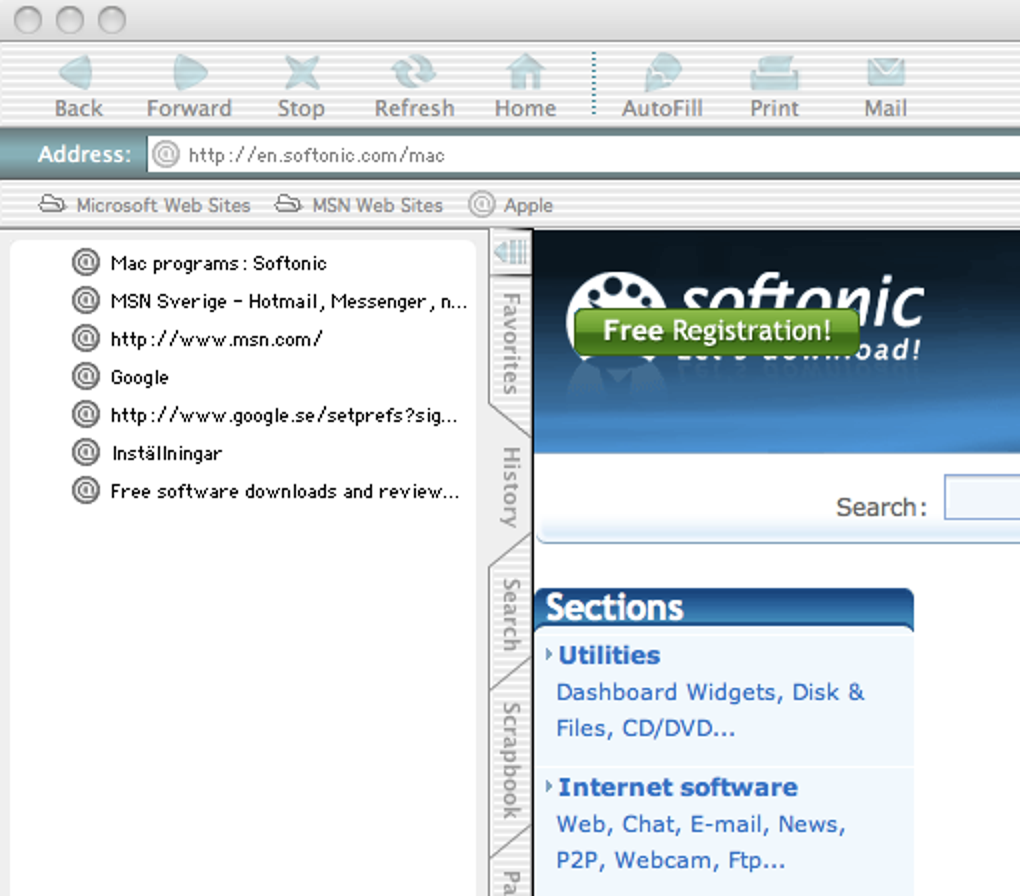
- Interet explorer for mac windows 10#
- Interet explorer for mac license#
- Interet explorer for mac free#
- Interet explorer for mac windows#
Interet explorer for mac windows#
With IE6, there was a quirks mode that could be triggered to make it behave like IE5.5 Version 6 was released with Windows XP on August 27, 2001. Version 5.5 was the last to have Compatibility Mode, which allowed Internet Explorer 4 to be run side by side with the 5.x. Internet Explorer 5.5 was later released for Windows Me in July 2000, and included many bug fixes and security patches. Version 5.0 was the last one to be released for Windows 3.1x or Windows NT 3.x. In September it was released with Windows 98. Then in March 1999 the final release was released (5.0). Firstly, a Developer Preview was released in June 1998 (5.0B1), and then a Public Preview was released in November 1998 (5.0B2). The actual release of Internet Explorer 5 happened in three stages. Bi-directional text, ruby text and direct XML/ XSLT support were included in this release, along with enhanced support for CSS Level 1 and 2. Version 5 came out in March 1999, following Microsoft's release of Internet Explorer 5.0 Beta versions in late 1998. Outlook Express 4.0 also came integrated into the browser and replaced the aging Microsoft Internet Mail & News product that was released with previous versions.
Interet explorer for mac free#
This version was designed to work on Windows 95, Windows 98, and Windows NT, and could be downloaded from the Internet, free of charge. The technology was based on an XML standard known as Channel Definition Format (CDF), which predated the currently used web syndication formats like RSS. " Active Channel" technology was also introduced to automatically obtain information updates from websites. The user could select other pages for use as Active Desktops as well. It included an option to enable " Active Desktop" which displayed World Wide Web content on the desktop itself and was updated automatically as the content changed. Version 4 released in September 1997, was shipped with Windows 95 OSR (OEM Service Release) 2.5, and the latest beta version of Windows 98 and was modified to integrate more closely with Microsoft Windows. Cascading Style Sheets (CSS) were also introduced with version 3 of Internet Explorer. Later, Microsoft NetMeeting and Windows Media Player were integrated into the product and thus helper applications became not as necessary as they once were. It also brought the browser much closer to the bar that had been set by Netscape, including the support of Netscape's plugins technology ( NPAPI), ActiveX, frames, and a reverse-engineered version of JavaScript named JScript. Version 3 included Internet Mail and News 1.0 and the Windows Address Book. In 1997, Spyglass threatened Microsoft with a contractual audit, in response to which Microsoft settled for US$8 million. Microsoft thus made no direct revenues on IE and was liable to pay Spyglass only the minimum quarterly fee. Internet Explorer 3.0 was released free of charge in August 1996 by bundling it with Windows 95, another OEM release. "Microsoft Internet Explorer 3.0 adds many new features which are great for HTML authors and demonstrates our accelerating commitment to W3C HTML standards." Version 2 was also included in Microsoft's Internet Starter Kit for Windows 95 in early 1996, which retailed for US$19.99 and included a how-to book and 30 days of Internet access on MSN among other features.

Version 2.0 was also released for the Macintosh and Windows 3.1 in April 1996. Version 2.0 was released for both Windows 95 and Windows NT in November 1995, featuring support for SSL, cookies, VRML, and Internet newsgroups. Version 1.5 was released several months later for Windows NT, with support for basic table rendering, an important early web standard. Microsoft originally released Internet Explorer 1.0 in August 1995 in two packages: at retail in Microsoft Plus! add-on for Windows 95 and via the simultaneous OEM release of Windows 95. The browser was then modified and released as Internet Explorer.
Interet explorer for mac license#
The license to Microsoft provided Spyglass (and thus NCSA) with a quarterly fee plus a percentage of Microsoft's revenues for the software.

Internet Explorer was initially built using the Spyglass, not the NCSA source code. Spyglass in turn delivered two versions of the Mosaic browser to Microsoft, one wholly based on the NCSA source code, and another engineered from scratch but conceptually modeled on the NCSA browser.

The original Mosaic came from NCSA, but since NCSA was a public entity it relied on Spyglass as its commercial licensing partner. The first Internet Explorer was derived from Spyglass Mosaic.
Interet explorer for mac windows 10#


 0 kommentar(er)
0 kommentar(er)
